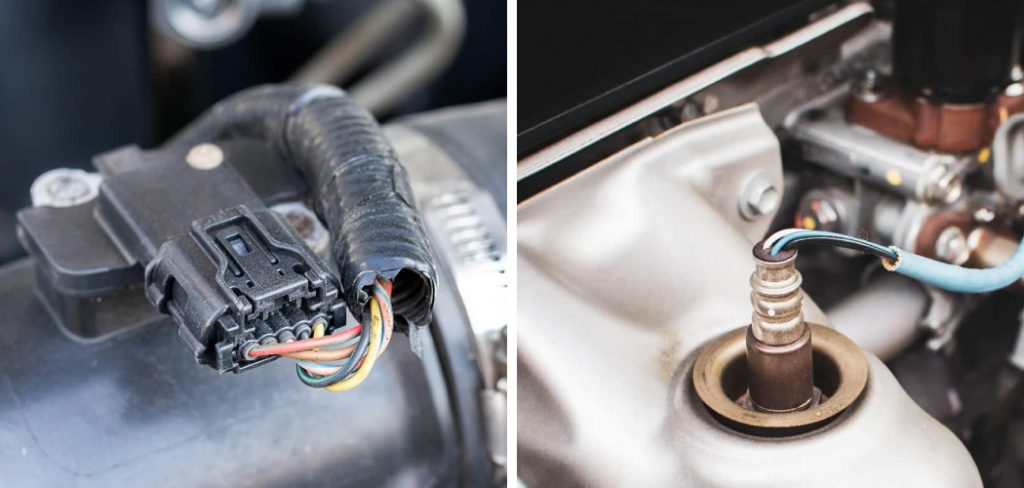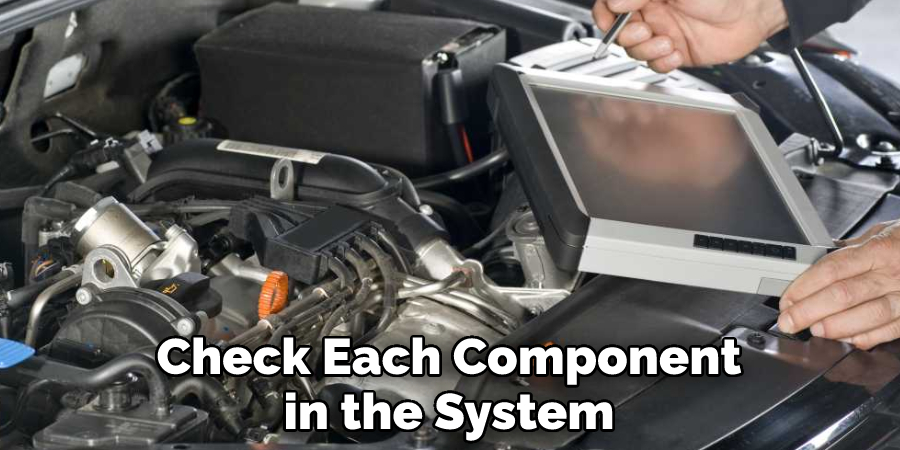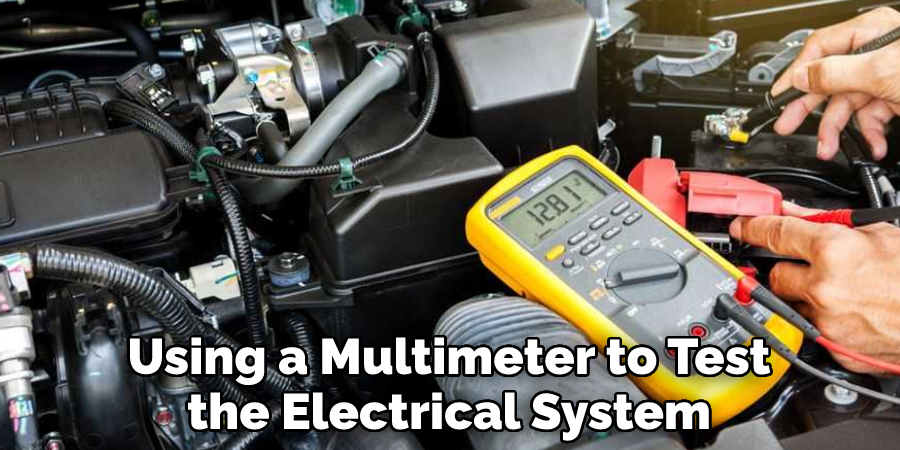Open loop fault is a common problem that can occur in electronic devices and computers. It is caused by interrupting the digital signal communication between two or more components, often leading to failure or malfunction. In some cases, it can cause permanent damage to the device or computer system. Therefore, it is important to immediately identify and repair open-loop faults to prevent serious damage and keep your device or system functioning properly.

The main advantage of fixing open-loop faults is that it can help save time and money. This is because by finding and fixing an open loop fault, you can prevent further damage from occurring. You can also avoid costly repairs or replacements by quickly addressing the issue. Additionally, as soon as the open loop fault is fixed, any system inefficiencies caused by the fault can be eliminated, and any performance issues resolved. In this blog post, You will learn in detail how to fix open loop fault.
Causes for How to Fix Open Loop Fault
Open loop faults occur when there is a break or disconnection in the feedback system. Electrical noise, faulty wiring, worn-out components, or mechanical failure could cause this. Some common causes of open loop faults include:
- Poor electrical grounding
- Faulty wiring
- High voltage surges
- Incompatible components
- Misaligned gears or belts
- Excessive friction in mechanical systems
Step by Step Processes for How to Fix Open Loop Fault
Step 1: Inspect the System
Inspect the system to identify and isolate the fault. Look for potential problems such as broken wires, incorrect connections, or damaged components. Make sure all wiring is properly connected and secure. Using a multimeter, check voltage levels at different points in the circuit to confirm whether or not it is an open loop fault.
Step 2: Check the Components
Check each component in the system to make sure it is functioning properly. If a component, such as a resistor or a capacitor, is damaged or malfunctioning, replace it with a new one. Pay attention to any changes in voltage levels when components are disconnected and reconnected. This will help you identify which components may be causing the open-loop fault.

Step 3: Troubleshoot the Circuit
Once you have isolated the components that are causing the open loop fault, begin troubleshooting the circuit by tracing back through it to find out which component or connection is creating the problem. Make sure all connections are secure and free from damage. If any components need to be replaced, do so before continuing.
Step 4: Check the Wiring
Check all wiring in the system to ensure it is secure and properly functioning. Ensure all wires are connected correctly according to instructions and that none are damaged. If you find any mistakes or problems with the wiring, replace them before continuing.
Step 5: Test the System
Test the system again to ensure the open-loop fault has been fixed. Ensure all voltages are at the correct levels and everything is functioning properly. If not, go back and troubleshoot until you find and fix the problem. Once you successfully fix the open loop fault, your system should be fully operational.
By following these steps, you can easily fix an open-loop fault in your system. However, if the problem persists or you cannot identify and isolate the cause of the fault, contact a professional for help.
Safety Tips for How to Fix Open Loop Fault
- Make sure to use the proper safety equipment when attempting to fix an open loop fault, including gloves, protective eyewear, and a hard hat.
- Use caution when disconnecting any connections associated with the open loop circuit, as potentially hazardous voltages may be present.
- Check all wiring associated with the open loop fault for signs of wear and tear, corrosion, or any other damages.
- Ensure accurate readings when using a multimeter to test the electrical system and identify faulty connections.
- Check all safety interlocks associated with the open loop fault to determine if they function properly.
- If you cannot repair the open loop fault yourself, contact an experienced electrician for assistance.

These safety tips will help you ensure that your open-loop fault is fixed correctly and safely. With proper care and attention, you can easily identify and resolve any issues with your circuit quickly and efficiently.
How Can You Prevent the Future Occurrence of an Open Loop Fault on Your System?
- Carefully inspect the system during regular maintenance checks to determine if any components have been damaged or malfunctioning.
- Install a monitoring system to detect changes in voltage, current, and other parameters that could indicate an open-loop fault.
- Ensure all wiring is properly secured and connected with the correct terminals for each system component.
- Check the accuracy of the settings on each system component and adjust them if necessary.
- Install protection devices such as fuses, circuit breakers, or overvoltage/under-voltage detection systems to protect against open-loop faults.
- Train personnel to recognize signs of an open loop fault and remedy it.
- Periodically test the system for potential open-loop faults to determine whether adjustments or repairs are needed.
- Ensure that all system components are compatible with one another and there is no mismatch in parameter values.
- Investigate any unexplained changes in system behavior, as these could indicate an open loop fault.
- Document any changes made to the system and keep a log of all maintenance activities performed on it. This will provide an audit trail for tracing any open-loop faults in the future.
By following these steps, you can help prevent the future occurrence of an open loop fault on your system and maintain its optimal performance. Regular maintenance and monitoring of the system will help ensure that any potential open-loop faults are addressed quickly, minimizing disruption to your operations.
How Should You Document Your Repairs and Maintenance of an Open Loop Fault?
- Identify the Source of the Open Loop Fault: To properly fix it, you must first understand what caused it and where it originated from. This can include analyzing electrical diagrams, diagnosing systems with test equipment, and visually inspecting components for signs of malfunction or damage.
- Make Necessary Repairs: Once the source of the open loop fault has been identified, it is important to make necessary repairs. This can include replacing malfunctioning or damaged components, repairing wiring connections, and performing preventive maintenance procedures such as lubrication and cleaning.
- Document Your Repair: Once you have made the necessary repairs, it is essential to document your work. This should include the replaced parts, the procedure used to repair them, and any maintenance tasks performed.
- Test for Correct Operation: Before leaving a job site, it is important to test for the correct operation of the repaired equipment or system. This should include testing electrical components with a multimeter and verifying proper function with other diagnostic tests.
- Document Your Findings: Lastly, it is important to document your findings in a formal report. This should include any observations you made during the repair process and the results of any tests performed for quality assurance. Your documentation will be invaluable if future repairs are needed and can help prevent further open-loop faults from occurring in the future.
By following these steps, you can ensure that your repairs and maintenance of an open loop fault are adequately documented for future reference. This will help to keep your systems operating correctly and efficiently in the long run.
Are There Any Common Mistakes to Avoid When Trying to Fix an Open Loop Fault?
Yes, there are some common mistakes to avoid when fixing an open-loop fault. One of the most frequent errors is not paying attention to the voltage readings in all phases during troubleshooting. It is important always to ensure that all three phases’ current and voltage readings are consistent, as this can help determine which phase has the problem.
Another frequent mistake is not adequately testing the line impedance. This can be done with an ohmmeter or a megger, and it helps to identify any resistance or capacitance issues within the system. Additionally, it is important to ensure that all components of the loop are properly connected and that there are no loose connections causing problems. Finally, it is critical to properly isolate any possible ground faults before making changes to the circuit. Ground faults can cause serious damage if not addressed quickly and correctly. Therefore, checking all ground connections is essential for safely fixing an open loop fault.
By avoiding these common mistakes, you can ensure that any open-loop fault is properly and quickly fixed. Proper safety measures should always be taken when working in or around live power circuits.
Conclusion
Open loop faults can lead to serious problems in a device and cause it to malfunction. It is important to know fixed open-loop faults to prevent these issues. However, it can be difficult for those without experience or expertise in the field of electronics and electrical engineering. Additionally, if the incorrect methods are used when fixing open-loop faults, it can cause further damage to the device and worsen the problem. Therefore, it is important to consult a professional before attempting repairs or adjustments.

To conclude, open-loop faults can be a difficult and frustrating problem to have, but with the proper steps, they can be easily fixed. The first step is to check for any loose connections between the control circuits and the power supply. If there are any issues, they should be addressed immediately before moving on to other possible causes. Next, look at the control circuits’ wiring to ensure it is correct and functioning properly. I hope this article has been beneficial in learning how to fix open loop fault. Make Sure the precautionary measures are followed chronologically.
You Can Check It Out to Fix a Knocking Lifter

